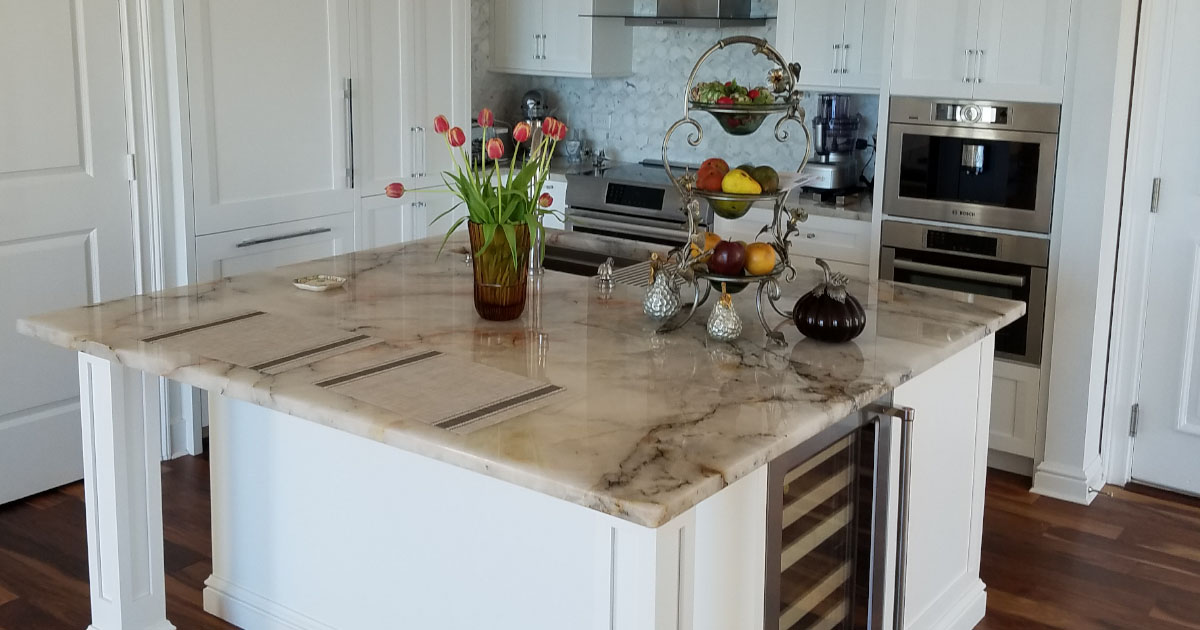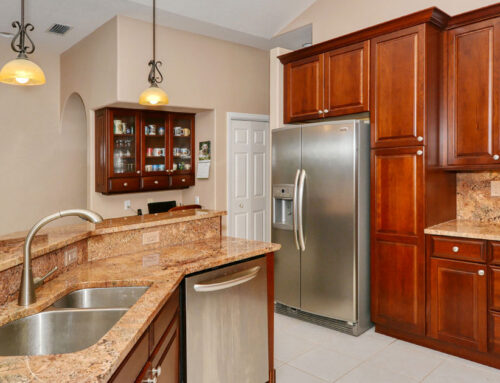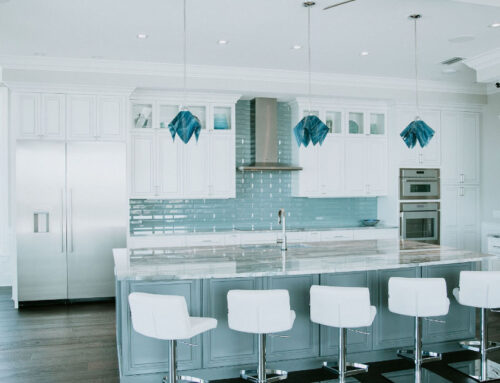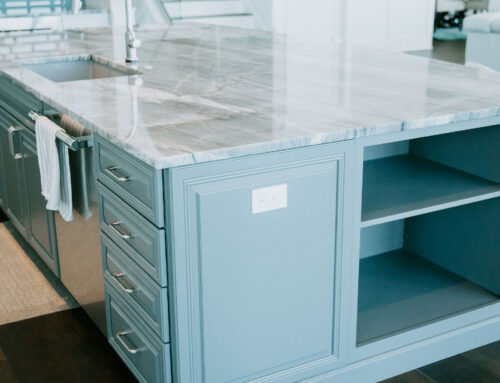Your kitchen flooring takes a lot of abuse – water gets spilled, food is dropped and can stain, glassware can fall and break. Tables and chairs are dragged over the floor, and mud gets tracked in by animals and kids. It’s important to choose the right flooring for your kitchen to suit your family’s needs. You’ve got many options for flooring; let’s review the pros and cons of some popular and interesting ones.
Vinyl: This is a common flooring option for kitchens of many styles. It’s waterproof and quite durable, making it excellent for everyday kitchen use. Vinyl is also super easy to clean, as it won’t deteriorate with water or soap application. It’s inexpensive and comes in a wide variety of styles so that it can match any dream kitchen you have in mind. On the other hand, it’s not easily repaired and difficult to remove if adhesive was used to install it. It’s also not the most eco-friendly option, as it’s a difficult material to recycle, and is not as long-lasting as some other options.
Hardwood: A gorgeous choice for any flooring, hardwood has been a reliable option used in homes for hundreds of years. It’s beautiful and can be stained to meet whatever color scheme you desire. It adds more value to a home than most other flooring options when you install it. However, hardwood can be subject to warping and water damage over the years and is quite high maintenance, so it is not the best option for a kitchen where you’ll likely have frequent spills.
Bamboo: Bamboo has recently come into the spotlight as a sustainable option for wood and paper products. It matures in a fraction of the time that trees do, making it quick to produce. It’s more resistant to water than hardwood, and more durable; however, it tends to be more expensive and difficult to finish than wood, and is still subject to nicks and scrapes from furniture and pet nails.
Ceramic tiles: With this option, you can choose from a nearly endless amount of colors, designs, and textures to achieve your ideal kitchen. Ceramic tiles are extremely durable, easily cleaned, and don’t absorb water, stains, or odors. Each type is assigned to a “hardness” group–Group I tiles are least durable and are best used in a small room that receives little foot traffic (i.e. a guest bathroom) while Group V can handle industrial-grade weight. For your average home kitchen, Group III tiles will provide the durability you want along with a variety of styles. Like vinyl though, it can be difficult to replace a single broken tile if one does end up cracking.
Flagstone: An option that is often overlooked, flagstone gives the kitchen a rustic, gorgeous appearance. It’s relatively inexpensive, and as a natural material it’s more eco-friendly than plastic-based options like vinyl or laminate. Flagstone is easy to clean, but as a rock it is also slightly porous–it can absorb water over time.
Concrete: Concrete is also a valid option for a kitchen floor. It’s very inexpensive–in fact, it’s usually already there underneath your current flooring. When polished, stained and colored, it gives the appearance of beautiful natural stone. As a practically indestructible material, it’s perfect for high-traffic kitchens; however, because it’s so hard, it can cause a higher frequency of breaks when items are dropped.
Your options for kitchen flooring are as boundless as your ideas! For more great design ideas for countertops, cabinets and more – call West Coast Design Build Florida today. Beautiful Sarasota kitchens are our specialty, and 2021 is your year to get the kitchen you always wanted.



